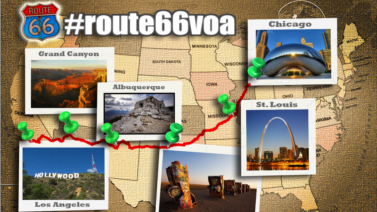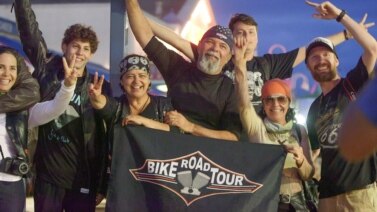When Route 66 travelers cross the Colorado River into the state of California, it is easy to begin to feel like the journey is almost over. After all, California is the eighth and final state you visit.
But, the end of the road in Los Angeles is still a 500-kilometer drive away. And much of that drive goes through the treacherous Mojave Desert.
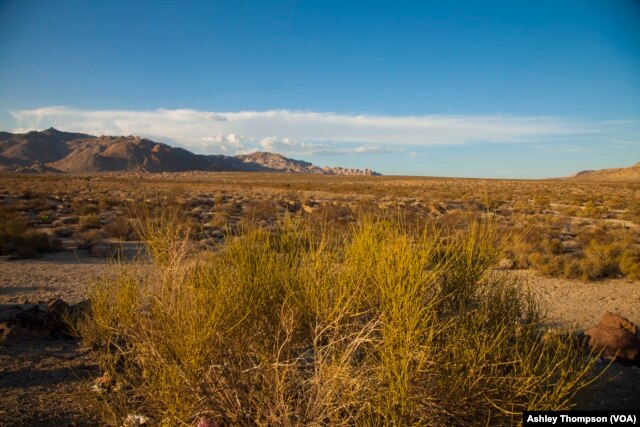
Eastern California’s Route 66 is broken, hot and deserted. The road passes crumbled buildings of bypassed towns.
Needles is first city in California after crossing the Colorado River. It was once a major stop along Route 66 and the Old National Trails Highway. That road was built before Route 66, in 1913.
Today, Needles struggles economically, like many towns along the old Route 66. Travelers on the road used to pass resorts, gold mines, oil wells, railroad stops, and ranches.
But economic opportunities dried up, just like the hot desert ground. Large interstates replaced the Mother Road. Traffic decreased. Bypassed towns are common here in the Mojave Desert.
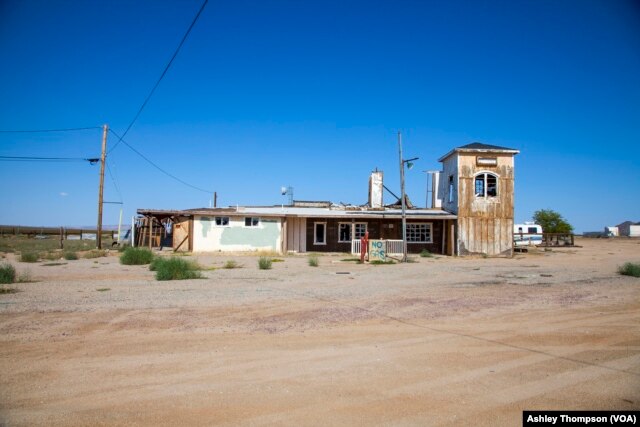
Goffs, California, is one of those towns. The former mining and railroad town was the first bypassed city along Route 66. Federal planners re-routed the Mother Road from Goffs in 1931. And in the 1960s, the new Interstate 40 bypassed it, too.
The town is now nearly empty. Goffs’ population is just 23 people. It serves as an example of how a disconnection from major roads can hurt a community.
Goffs sits at one of the highest points in the Mojave Desert. From there, Route 66 descends to Fenner, and then on to Essex.
After a brief meetup with Interstate 40, Route 66 travels south to the town of Amboy. The remote town is easy to spot: a colorful sign that reads “Roy’s Motel Cafe” stands tall in the desert landscape. Amboy has fewer than five permanent residents.
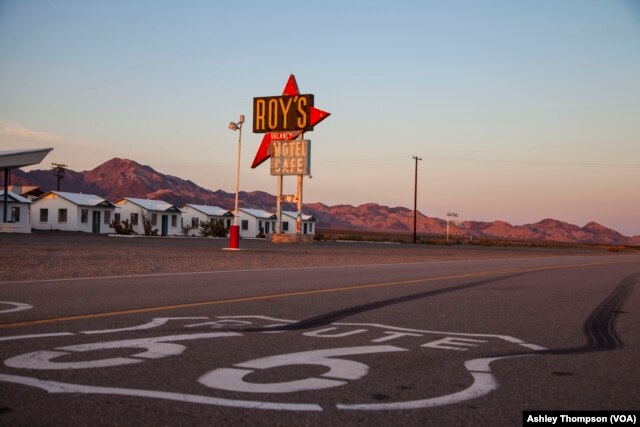
The area’s rugged scenery attracts international marketers. The desert scenery has appeared in commercials for Cadillac cars, German beer, and Levi Strauss jeans.
The histories of nearby desert cities -- Ludlow, Baghdad, and Newberry Springs -- are similar to Goffs and Amboy. Once major railroad stops and supply centers for travelers, they rely now on Route 66 tourists to keep their few businesses open.
The urban sprawl of Los Angeles becomes visible some 100 kilometers away from the city itself. The distant lights, haze, and increased traffic serve as reminders that the end of the Mother Road is near.
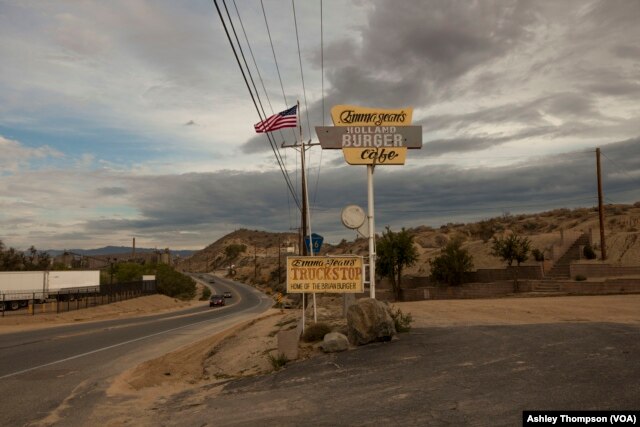
The Cajon Pass connects Los Angeles' eastern suburbs and the Mojave Desert. The winding, mountainous road once served as a Native American trade route. It provides Route 66 travelers with a final sense of the open road, before the L.A. traffic jams begin far outside the city.
On its way into L.A., Route 66 passes through the cities of San Bernardino, Rialto, and Pasadena. In San Bernardino, you find the site of the original McDonald’s, which is now a museum. And Rialto is home to a classic roadside wigwam motel.
And then, finally, the road enters Los Angeles.
Route 66 cuts right through the heart of Hollywood. There, you can “go Hollywood” by touring a movie studio or watching a television show filming.
But one activity that should not be missed is a stroll down the Hollywood Walk of Fame. More than 2,500 squares made of terrazzo, a stone mix, line the sidewalk along Hollywood Boulevard.
Each square has a pink star in the middle, with the name of a celebrity lettered in brass. The first star went into the sidewalk in 1960. About 30 entertainers earn a star along the Walk of Fame every year.
The Walk of Fame gets especially crowded outside the TCL Chinese Theater. The business opened in 1927 as Grauman’s Chinese Theater. The unique building includes pagoda-like structures and temple bells.
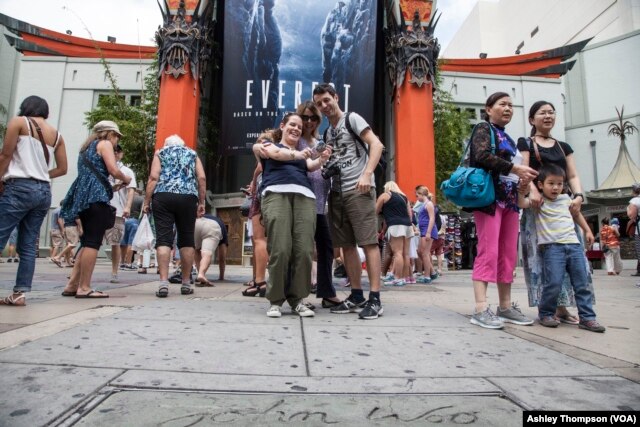
The Chinese Theater holds many movie premieres and other events. For many years, it was even home to the Academy Awards Ceremony, or Oscars.
On the ground outside of the theater are hundreds of signatures, handprints and footprints of celebrities. They have pressed their hands and feet into wet cement.
Actors and dancers perform on the sidewalk outside the theater. They might be dressed up as characters from well-known movies, like Freddy Kruger of the horror film, “Nightmare on Elm Street.”
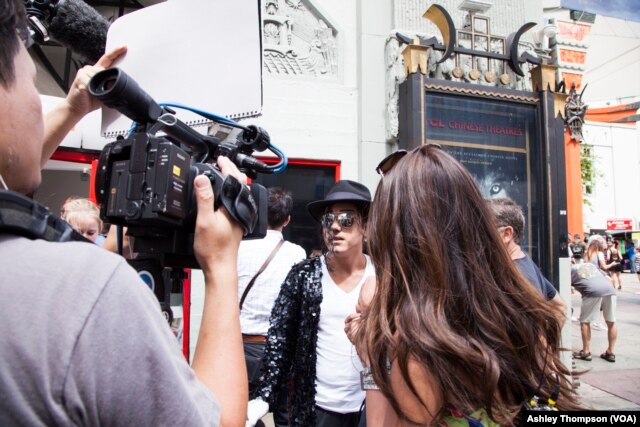
Eduardo Lezcano moved to Hollywood from Argentina. He was dressed like music star Michael Jackson. And he could dance like him, too.
"I come here for live and work, and looking for my dreams, you know?"
Just west of Hollywood on Route 66 is another very famous neighborhood: Beverly Hills. Many celebrities live there. The neighborhood is known for its beautiful mansions hidden behind tall walls and gates.
Vendors in Beverly Hills and Hollywood even sell maps to the stars’ homes. The maps guide you through the residential part of Beverly Hills. But they are not always 100 percent correct.
A few more kilometers down the road, the historic Route 66 comes to its western end when the road reaches the sparkling blue Pacific Ocean.
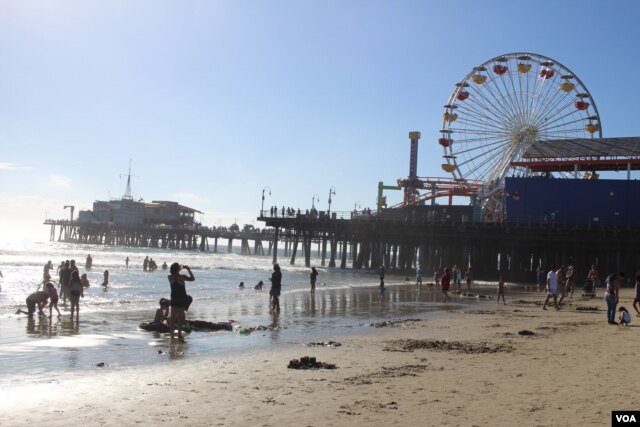
The Santa Monica Pier is the traditional end to Route 66. The pier opened in 1909.
Today, the Pier includes an official sign to mark the most western point of Route 66. The sign reads “Santa Monica -- 66 -- End of the Trail.”
The official sign was put up in 2009 with the help of the small business Route-66-to-Cali. The little stand on the pier sells American-made Route 66 t-shirts and other road-related products. Brian Vazquez explains how the sign came to be.
"So, there was never sense of, how do I say it, never a sense of closure for people. You would just come to the end and go 'hey that's it. Let's go home.' For 83 years there was never an ending sign until we created that one. So now, there's a sense of closure for people."

We celebrated the end of our two-week Route 66 journey under the sign on the Pier. We were not alone. Nearby a large group of Brazilian motorcycle riders held hands and said a prayer. Then they cheered and hugged and congratulated each other.
Ednilso Gablak expressed the excitement of the group.
“Well, it's kind of a dream, you know. All of these people love motorcycle. We saw movies; we saw on the television, magazines, saw photos. Today, we can see (on) the Internet so many videos. So I think everybody knows something about Route 66, right?”
The VOA Route 66 team agrees. And for those still strangers to the Mother Road, now is a great time to motor west on the highway that’s the best.
I'm Caty Weaver.
And I'm Ashley Thompson.
Ashley Thompson and Caty Weaver wrote this story. Hai Do was the editor.
Words in This Story
treacherous - adj. dangerous or difficult to deal with
rugged - adj. having a rough, uneven surface
urban sprawl - n. a situation in which large stores, groups of houses, etc., are built in an area around a city that formerly had few people living in it
closure - n. a feeling that something has been completed or that a problem has been solved
